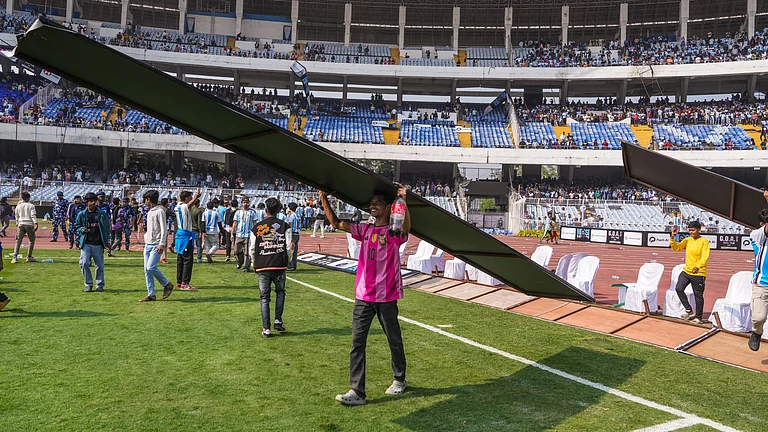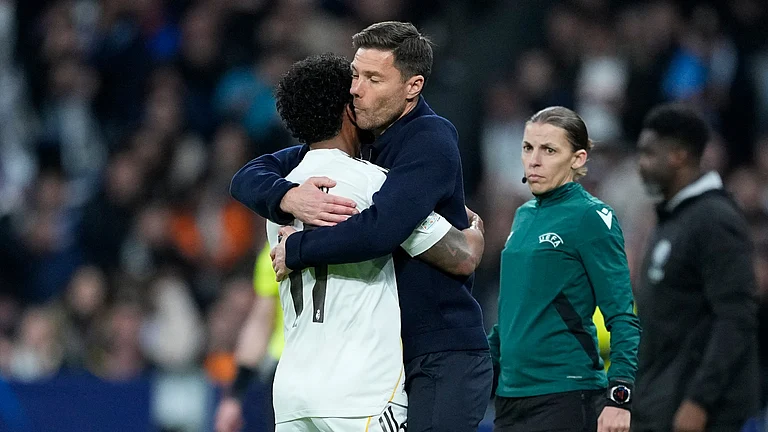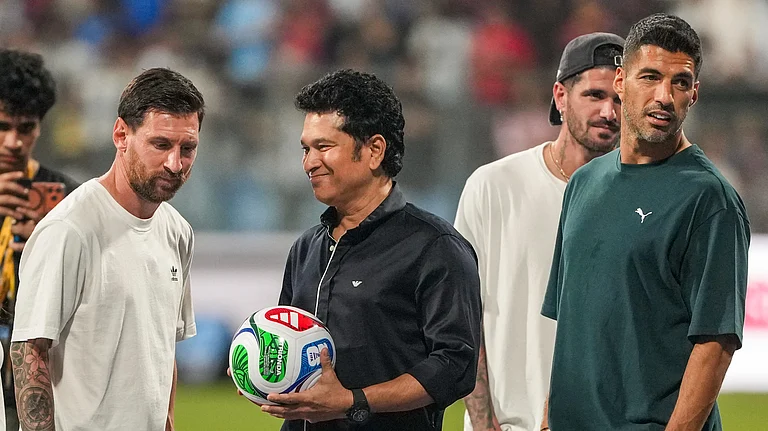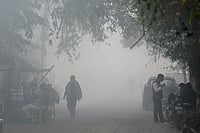The pre-election political slugfest between the two major political parties on the Rafale aircraft deal involves a cacophony of narratives being sold to the less-informed prospective voters, even as the truth is getting buried. A good weapon platform, bought after a gruelling and technically sound selection process followed by both the UPA and the NDA governments, is being sullied at the cost of national pride and honour. It is time for professionals to step in and put things in the correct perspective. It is important to understand the differences between the deal the UPA was pursuing but could not complete, and what the NDA has signed.
It was in 2001 that the Indian Air Force (IAF) first approached the government for 126 fighters to fill the gap between the Light Combat Aircraft (LCA) and the Su-30 MKI. When the procurement process for Medium Multi-Role Combat Aircraft (MMRCA) got rolling in 2007, it was stated that 18 aircraft will be bought outright and 108 will be built by the Hindustan Aeronautics Ltd (HAL). The six contenders were Boeing F-18 and Lockheed F-16 from the US, the French Dassault Rafale, the Eurofighter Typhoon, the Russian Mikoyan MiG-35 and the Swedish Saab JAS 39 Gripen. After meeting the technical parameters at extensive field evaluation trials, Rafale and Typhoon were shortlisted in April 2011. In January 2012, Rafale was announced the winner, based on lower life-cycle cost. Then began the final negotiations with the French company.
The deal, however, got stalled on two counts. Firstly, Dassault was unwilling to take responsibility for the quality control of aircraft produced by HAL due to reservations about the latter’s ability to accommodate the complex manufacturing technology, and also because it could not exercise any control over an Indian state-run company. It was perhaps an error to have made such a stipulation in the Request for Proposal because no one can ensure quality unless it has direct control over the organisation. Secondly, production man-hours indicated by HAL were 2.7 times more, which would greatly increase the cost and upset the calculations that had led to the initial choice of the lowest bidder. Given this background, it was legally untenable to go through with the MMRCA contract.
Interestingly, WikiLeaks exposed a confidential report by former US ambassador to India Timothy Roemer to the US Administration, in which it was said that “HAL was not competent to be a partner” of the American companies in the race for the MMRCA contract.
The deal for 126 aircraft was never signed. The cost estimates in the public domain in 2014 were anywhere between US$ 20-30 billion. The Ministry of Defence (MoD) under the NDA government that took over that year continued the process of negotiations with Dassault on the same lines as the UPA. By early 2015, it was clear that the deal was heading for a dead-end. Since the Defence Procurement Procedure (DPP) does not permit negotiations with the next lowest bidder (Eurofighter), the choices were limited. In view of the urgent need of fighter jets for the IAF due to depleting strength, in April that year, it was decided to go for a Government-to-Government (G2G) deal and increase the number of French-assembled aircraft to be bought to 36. The 126 aircraft tender was officially withdrawn on July 30, 2015, while the negotiations for the price of 36 aircraft stretched till September 2016.
The contract was finally signed for Euro 7.8 billion (US$ 9.1 billion). This reportedly includes weapons, training, repair facilities and spares package, among other things. Dassault is now contractually committed to provide performance-based logistic support for five years to two squadrons against the earlier proposal to support only one. Further, it is committed to ensuring that a minimum of 75 per cent of the IAF fleet remains operationally available.
It is being alleged that the deal price is too high. Any cost comparisons must be for the total package—and in the absence of any earlier deal, it can only be conjecture. Egypt and Qatar ordered the Rafale around the same time. For 24 fighters each, Egypt paid Euro 5.2 billion and Qatar Euro 6.3 billion. Though the deals are quite different in terms of the overall package, but the ballpark figures are similar—in fact, cheaper for India.
“The approximate acquisition cost of the Rafale aircraft has already been provided to Parliament,” the MoD has clarified through a written reply to the Lok Sabha. “Provision of exact item-wise cost and other information will reveal, inter alia, details regarding the various customisations and weapons systems specially designed to augment the effectiveness and lethality of the assets, impact our military preparedness and compromise our national security.” Concerned with the controversy surrounding the purchase of a desperately needed fighter, the IAF chief had to go public and stress that the G2G deal was not only operationally better, but also cheaper.
The French government’s foreign affairs spokesman said, “France and India concluded in 2008 a security agreement, which legally binds the two states to protect the classified information provided by the partner that could impact security and operational capabilities of the defence equipment of India or France.” Thus, these provisions naturally apply to the IGA (Inter Governmental Agreement) for 36 Rafale concluded on September 23, 2016. The 2008 agreement (signed during the UPA regime) must be honoured.
Worried about traditionally good diplomatic relations between the two countries, French President Emmanuel Macron had to immediately make a public statement about the secrecy clause. The good thing is that no one has questioned the due process having been followed.
India has signed G2G weapon deals with Soviet Union and Russia for decades. Similarly, the P-8I, C-17, C-130J, Chinook and Apache helicopters from US companies are all under Foreign Military Sales (FMS) route, which is in some ways akin to G2G. Such deals get sovereign backing of the government and are invariably cheaper.
Then there is the ‘offsets’ clause in the contract. To promote indigenisation, a robust offsets clause has been there in the DPP since the UPA days. The offsets were to ensure that for every dollar that went to a foreign arms supplier, 30-50 per cent got infused back into India for a defence-related investment or activity. The aim was to leverage capital acquisitions to develop the Indian defence industry, improve defence research and encourage the development of synergistic sectors such as civil aerospace and internal security. Defence offsets have been part of regulations of many countries, including the major arms suppliers.
In the Rafale deal, Dassault has to invest 50 per cent of the deal amount in any defence-related industry in India. For this, Dassault has to select Indian partners. The government has nothing to do with this selection as its role is limited to monitoring that offsets are as per the DPP. There was an offsets clause in the Pilatus PC-7 contract also, and they chose their Indian partners on their own.
Many defence deals such as Bofors and AgustaWestland got mired in controversies related to irregularities. One wonders why such ruckus is rare in deals with Russia and the US. The DPP is well laid out. All contingencies are clearly spelt out and expected to be followed by the book. The Comptroller and Auditor General oversees all irregularities and, if they exist, they can be handled as per the law of the land. In the Rafale deal, allegations appear to be generic and not substantiated. It is unfortunate that even after open tendering, painstaking technical evaluation, and endless negotiations, often in the public domain (though they should normally have been strictly confidential), such a spectacle is conjured midway through the contract execution.
Unsubstantiated political slugfest over critical defence equipment should be avoided as it not only shames the country internationally, it also vitiates the entire defence procurement process and puts decision-makers on the defensive. It also deprives the defence forces of critically required operational capability, impacting national security and even their morale.
(The writer is a test pilot)






















